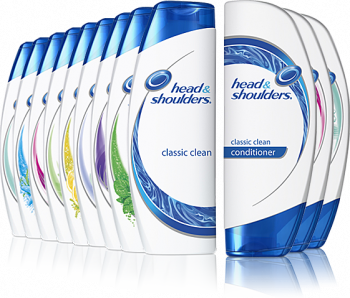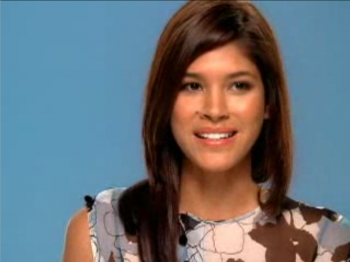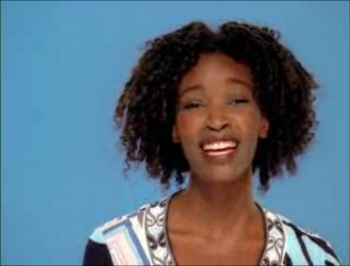Head & Shoulders Gives Good Hair: Dance, Hair, and Latina Representation
Priscilla Peña Ovalle / University of Oregon

In my last column for Flow, I analyzed a series of Viagra commercials (Viva Viagra!) to show how dance operated as a euphemism for sex and a signifier of racialized sexuality. Here, I look to another commercial to show how the media Latina is once again ambiguously racialized through representations of hair and dance.
As Jennifer Fuller argued in her column “Dreadful Locks: Shear Genius and the Limits of Multiculturalism”, black women and black hair have often been represented as unattractive or unruly within U.S. media culture. My argument similarly navigates the black-white binary of representation through hair; in this case, however, I argue that the Latina’s body and hairstyle must simultaneously represent signifiers of sameness and difference (or whiteness and blackness) within the media frame.
Most successful Latinas in mainstream media (from Rita Hayworth to Jennifer Lopez) have had to change their hair to more closely conform to white standards of cosmetic beauty; usually, this translates into long, straight/ened, and light brown hair. Meanwhile, the Latina’s physical body is both racialized and sexualized through her ambiguously ethnicized or racialized difference. Within the media frame, the ambiguity of this simultaneity is further magnified through the Latina’s seemingly compulsive action of dance.
One Head & Shoulders television commercial exemplifies the ubiquitous relationship between hair, dance, and Latina representation. In 2007, the drugstore dandruff shampoo Head & Shoulders re-launched itself as a salon-quality product through a series of commercials, print advertisements, and promotional spots (Ellen, etc) that announced “millions of people” had recently discovered “a secret to truly healthy hair.” The thirty-second television spot that caught my attention ran during a Lifetime syndicated airing of Will and Grace in December of 2007, but the commercial has since run on various networks.

The commercial offers a racialized spectrum of women and hair in order to advertise its product through a series of “testimonials” that offer a predictable series of remarks. “It actually changed my hair.” “It feels healthy.” “My scalp feels…really moisturized.” And, “It’s got movement…like salsa.” Each statement is uttered by a multicultural list of characters (or impossibly beautiful so-called average blind-test subjects) and it should take no real time to imagine which two statements come from the black and Latina figures. Healthy, moisturized hair rewards the auburn-, dark brown- and red-haired (white) women while the women who laud their hair’s ability to change or be in constant movement are nonwhite.
The commercial begins with the black silhouette of a large crowd against a white background. The camera’s movement reveals that the computer-generated crowd stands in the shape of a Head & Shoulders logo with a question mark at the center. We enter the conversation of two silhouetted female figures as they gesture a whisper and a female voiceover offers to let us in on the secret to healthy hair. The commercial then wipe-transitions into a series of interviews with purportedly real women.
The interviews, primarily shot in close-ups, feature a range of women across a racialized spectrum of shampoo users. In order, we are introduced to a black woman with medium-length curly black hair; a white woman with longer straight auburn hair; a (presumably) Latina woman with long, straight medium or light brown hair; a white woman with long, dark brown hair; and a very fair-complected white woman with long, straight, and bright red hair. Visually, the testimonials provide the range of hair types that might be associated with female hair care product consumers. The women gesture towards, touch, and swing their hair to indicate the “health” and “moisture” bestowed by the product.




For the black and brown women in the commercial, Head and Shoulders proclaims to offer two key elements: “change” and “movement.” The black woman’s proclamation that the product has “actually changed [her] hair” brings forth a history of racialization and cosmetic manipulation tied to oppression, assimilation, identity negotiation, etc. For the Latina, the concept of “movement” identifies her as Latina and confirms her cultural, racial, and/or ethnic authenticity.
Though the camera is constantly moving, subtly reframing the women to make the commercial more visually dynamic, the Latina is the only character/subject granted a frame wider than the aforementioned close-up. In her testimonial, Julianna (identified by name on the Head and Shoulders website) says, in slightly accented English, that her hair’s “got movement.” The close-up testimonial immediately cuts to a medium shot as her voiceover continues, “Like salsa.” The camera’s reframing for this cut is jarring in its form (it is the only medium shot among the testimonials), but fluid in its ideological transition. On cue, we see the Latina perform a brief salsa step: her body rocks from side to side, suggesting that her legs are shifting her balance, as her bent arms move like pistons. Though we only see her body from the waist up, Julianna’s smile and movement tell us that she loves dance and her mobile hair.
Where the black woman is cast to immediately signify difference, the Latina visually operates as an ambiguously racialized body that is crucially nonwhite — but not black. The black woman, identified as Tia on the Head and Shoulders website, is marked as different through skin color, her use of the word “change,” and the fact that she is the only woman in the commercial who does not have straight hair. Because the commercial’s Latina is cast as a light-skinned woman with lighter, straight hair, it is possible to visually classify her as similar to the white women featured in the commercial. However, Julianna’s accented English and her seemingly compulsive desire to dance salsa marks her as unmistakably Latina. Because the history of Latina representation in mainstream media dictates that she must look different enough, but not too different, and that she must dance, I wonder whether a black Latina, a Latina without an identifiable accent, or a static Latina would have worked for this role?
Image Credits:
1. Head and Shoulders Product Line
2. What’s the secret to beautiful hair?
3. Multicultural Hair, From Sameness to Difference (all the pictures of the women)
4. Front Page Image
Please feel free to comment.
The ad definitely seems to function with some beauty-industry archetypes. The tropes you cite seem fairly familiar — both in other shampoo commercials, and in “beauty” industry advertisements and publications more generally. I can’t think of an ad that doesn’t trade in some of these racial codes, just as I can’t think of an ad that shows a woman with short hair or some other nonstandard hair styling. It’s interesting to imagine what an ad with a “smarter” approach to diversity might look like — or is that even possible?
Great article! Your ending questions point to some really interested qualities about the Latina archetype working in this ad. Your analysis of the connotations of the words such as “movement” and “change” also bring up some really interesting points about how these ads are drawing upon a collective conscious in order to sell its products — a strategy that I’m sure is widespread in advertising. While your article concentrates primarily on the representation of the Latina woman, I am curious about what tropes are used in the advertisements featuring the white, brunette woman and the redhead woman. Seeing as how these testimonials and commercials all work as a set of images and video to promote the ‘What’s your secret’ campaign, I’m wondering how/ if the construction of their whiteness plays into the othering of the black woman and ambiguous racializing of the Latina woman.
Thank you, Carly and Candice! I think both of your points are right on. The tropes the H&S commercials are utilizing are by no means out of the ordinary, but I find that all the more compelling. Why are the signs of sameness and difference marked through race and not hair length or style? And which woman would be elected to sport the mohawk or asymmetrical cut? The redhead? The white brunette? Probably not the Latina or black woman. Coming back to Candice’s point, I think the flexibility of whiteness would allow for these tress-gressions in a way that neither black nor brown woman could perform. The commercial’s lone black female body is also the commercial’s only representation of curly (not wavy or curled) hair, begging the question: How much did H&S actually “change’ her hair?
The column was motivated by the formal exceptions that the commercial utilized for the testimonials. The use of the wider shot to get the Latina’s movement into frame (a tactic that is both natural and out of place) was too compelling given the historical relationship between Latina hair and bodily movement. (I wish I had the clip, I really do!) Thanks for your thoughts and I hope to keep the conversation going — if through other channels.
I completely agree with the argument that the Latin image must represent signifiers of sameness and difference within the media frame. It is true that successful Latinas today have assimilated into white standard of what beauty should look like especially since in the past black hair has been associated as unattractiveness or being unruly. The Head and Shoulders commercial is a perfect example of how the company is trying to associate a concept that was once seen as unattractive into an image that women everywhere strive for. They are challenging the negative ideologies toward Hispanic women and turning them into positive images that many may aim for. Because of the specific races that they chose to use in the commercial for the product they were able to cover all the different controversial grounds. For example the testimonial only used 4 women, an African American, a two Latinas, and a Caucasian woman all of them different to provide a wide range of different hair types those female consumers may associate with. The media is showing Hispanic women in a more positive light despite negative ideologies against them and associating them more with the ideal image of being a woman and having good hair.
Pingback: For 2/4 « Race Media Culture
Pingback: February 14 | Race, Media & Culture- Spring